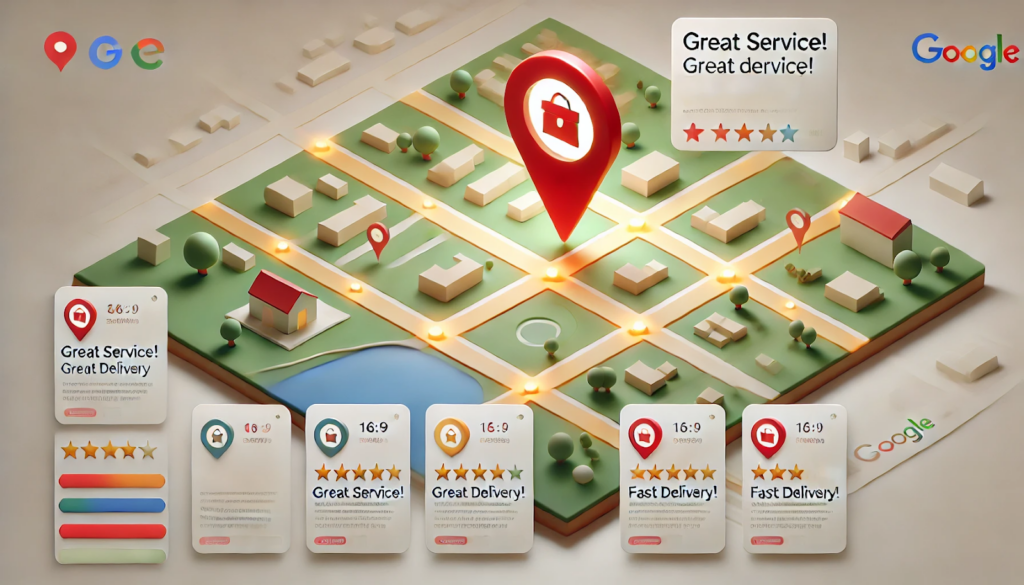SEO for eCommerce websites: Boost visibility, traffic, and sales

Introduction
With 68% of all online experiences beginning with a search engine, customers often start their shopping journey by typing in keywords related to products they're interested in. Whether they’re looking for specific items, comparing brands, or researching product features, they won't find eCommerce websites with poor SEO.
By implementing effective SEO strategies, you position your business to capture this high-intent traffic, guiding potential customers straight to your virtual storefront.
SEO’s impact on sales and brand visibility
A strong SEO presence doesn’t just improve visibility; it drives real, measurable results. SEO increases brand awareness by positioning your products in front of customers actively searching for them, often leading to higher conversion rates.
Unlike paid advertising, which requires ongoing investment, SEO delivers long-term results that build over time, enhancing trust, authority, and ultimately, sales. For retailers, this means more opportunities to convert casual browsers into loyal customers.
eCommerce website development: Strategies to drive sales and enhance user experience
- Personalizing customer experience in eCommerce and retail with data
- SEO for eCommerce websites: Boost visibility, traffic, and sales — you are here
- Mobile optimization: Elevate user experience and SEO for modern success
Understanding the basics of eCommerce SEO
Before diving into advanced tactics, you need to master the core elements of SEO that directly impact how search engines perceive and rank your online store. eCommerce SEO encompasses on-page, technical, and content-focused elements — all critical for creating a well-optimized, high-performing website that attracts the right customers.
On-page SEO elements
On-page SEO involves the elements on your web pages that you control and optimize. Focus on these components:
- Keyword optimization. Choose relevant, high-intent keywords for each product and category page. For example, targeting phrases like “buy eco-friendly yoga mat” directly captures purchase intent.
- Title tags and meta descriptions. Craft clear, keyword-rich titles and meta descriptions that encourage clicks. These are your first impressions in search results, so make them count.
- Headers (H1, H2, H3). Structure your content with headers to improve readability and help search engines understand the hierarchy of information on your page.
- Image alt text. Use descriptive alt text for images to enhance accessibility and help your site appear in image search results.
Technical SEO essentials for eCommerce websites

Behind-the-scenes elements are just as important for eCommerce SEO success. Ensure the following:
- Website speed. Online shoppers are impatient. Slow load times can lead to high bounce rates, so optimizing for speed is non-negotiable.
- Mobile-friendliness. With mobile commerce dominating, a responsive, mobile-optimized site is critical. Google’s mobile-first indexing makes this even more essential.
- Secure HTTPS. Security builds trust and boosts rankings. An SSL certificate ensures your site is HTTPS-enabled, protecting customer data and fostering confidence.
- Structured data markup. Adding schema markup helps search engines understand your content better and can earn you rich snippets, like star ratings, in search results, making your listings more attractive.
Content impact on eCommerce websites' SEO
Content is more than just product descriptions — it’s a powerful tool for attracting and converting shoppers.
- Product descriptions. Write unique, detailed descriptions for each product. Highlight key features and benefits that matter to your target audience to provide value and boost SEO.
- Category pages. Optimize category pages with relevant keywords to improve visibility for users browsing broader categories, like “sustainable workout gear.”
- Blog content. Blogs allow you to capture search intent earlier in the customer journey. For example, an article titled “How to choose the right running shoe” can attract users researching their options and direct them to your product pages when they’re ready to buy.

Local SEO strategies for eCommerce websites: Enhancing regional visibility and foot traffic
In an era where consumers increasingly search for local products and services online, you must prioritize local SEO to bridge the gap between digital visibility and physical foot traffic. Local SEO strategies are essential for connecting with nearby customers, especially for retailers with both online and brick-and-mortar operations. Here’s how you can dominate local search results, enhance visibility, and drive sales.
Why local SEO matters for eCommerce websites
Local SEO offers significant benefits that can elevate your business:
- Capturing intent-driven traffic. Local searches often indicate high intent, with consumers ready to purchase or visit. Google reports that “near me” searches have increased by over 500% in recent years, showing a strong intent to act.
- Building regional brand loyalty. Local SEO helps establish a connection with your community, fostering trust and loyalty among nearby consumers.
- Standing out in crowded markets. Competing in local search results is often less challenging than national or global SEO, allowing smaller retailers to outperform larger competitors in specific geographic areas.
Optimizing your Google Business Profile
Your Google Business Profile (GBP) serves as the cornerstone of any local SEO strategy. To maximize its potential:
- Accurate business information. Ensure your name, address, and phone number (NAP) are consistent across all platforms. Add business hours, website links, and an engaging description.
- Rich media content. Upload high-quality photos of your storefront, products, and services. Include promotional videos if possible.
- Local reviews. Encourage satisfied customers to leave reviews and respond to all feedback — both positive and negative — to show engagement and enhance trust.
- Categories and attributes. Select relevant business categories and attributes like “pet-friendly” or “accessible parking” to make your profile more discoverable.
Using location-based keywords and local content
Location-specific keywords are critical for ranking in local searches. Here’s how to optimize for them:
- Targeted keywords. Incorporate phrases like “best running shoes in Chicago” or “eco-friendly coffee shop near Central Park” into product descriptions, meta titles, and blog content.
- Dedicated landing pages. Create specific landing pages for each location if your business operates in multiple areas. Include local details such as nearby landmarks, unique services, and customer testimonials.
- Locally relevant blog posts. Write about community events, seasonal trends, or region-specific topics. For example, a retailer in Denver might publish a blog titled “Top Winter Hiking Gear for Colorado Trails.”
Leveraging local directories and citations

Expand your presence beyond Google by ensuring your business is listed on other authoritative local directories. Examples include Yelp, Bing Places, and regional business directories. Consistent information across these platforms boosts credibility and strengthens your local SEO efforts.
eCommerce link building strategies: Building authority through connections
For eCommerce retailers, link building is about establishing credibility, driving traffic, and improving search rankings. Unlike other industries, eCommerce demands a strategic approach to link building, focused on relevance, quality, and creating value for both customers and search engines.
Why backlinks matter for eCommerce websites' SEO
Backlinks serve as endorsements from other websites, signaling to search engines that your site is trustworthy and valuable. For eCommerce sites, high-quality backlinks can:
- Improve domain authority. Boost search rankings for product and category pages, enhancing your visibility.
- Drive referral traffic. Links from relevant, high-traffic sites bring qualified visitors directly to your store.
- Enhance brand visibility. Increase exposure in your niche by appearing on reputable platforms.
Building high-quality backlinks
Quality outweighs quantity when it comes to backlinks. Use these methods to secure valuable links for your eCommerce site:
- Guest blogging and content partnerships.
- Collaborate with industry blogs and influencers to create guest posts. For example, a furniture retailer might write a post about “Designing Small Spaces” for a home improvement blog, linking back to their products.
- Establish partnerships with complementary brands to cross-promote content and links.
- Product reviews and influencer outreach.
- Send your products to influencers or niche bloggers for reviews. Their audience trusts their recommendations, generating sales and valuable backlinks.
- Use tools like BuzzSumo or Upfluence to identify relevant influencers in your industry.
- Skyscraper content strategy.
- Identify popular content in your niche and create a more comprehensive, engaging version. Reach out to sites linking to the original content, showcasing how your version adds greater value.
- Leverage resource pages.
- Find industry-specific resource pages (e.g., “Best Online Fitness Gear Stores”) and pitch your site as a valuable addition. Make sure your site offers unique products or content to stand out.
- Broken link building.
- Use tools like Ahrefs or Screaming Frog to identify broken links on related sites. Offer your content or product page as a replacement for the broken link, providing value to both the site owner and their audience.
Product-focused link-building tactics
eCommerce link building isn’t just about blogs and resource pages. Focus your efforts directly on product and category pages:
- Gift guides. Pitch your products to be featured in gift guides during holidays or seasonal events.
- Comparison pages. Collaborate with review sites or bloggers to include your products in comparison posts, such as “Top 5 Wireless Earbuds for 2024.”
- Brand mentions. Monitor for unlinked mentions of your brand using tools like Google Alerts or SEMrush Brand Monitoring. Reach out to authors and request a backlink.
Monitoring link-building success
Tracking and analyzing your backlink profile is critical for refining your strategy. Key metrics to monitor include:
- Domain authority (DA). Ensure your backlinks come from high-authority sites within your niche.
- Traffic quality. Evaluate referral traffic to determine whether backlinks drive qualified visitors to your site.
- Anchor text relevance. Use descriptive anchor text that aligns with your target keywords to maximize SEO impact.
Content marketing for eCommerce websites' SEO: driving organic traffic
Content marketing is a cornerstone of effective SEO for eCommerce. By creating high-quality, relevant content, you can attract targeted organic traffic, build trust with potential customers, and guide them through the buying journey. For eCommerce, this means combining educational resources with persuasive product-focused content to meet users’ needs at every stage of the funnel.
Creating valuable blog content
A blog is more than a space for updates — it’s a powerful tool for attracting organic traffic and establishing authority in your niche. Focus on the following:
- Educational guides. Answer common customer questions with detailed guides. For instance, a sports retailer could create a blog titled “How to choose the right running shoes” with links to relevant product categories. Use insights from tools like Google Search Console to identify the questions users are already asking.
- Product comparisons and reviews. Highlight features of your top-sellers or compare your products with competitors. For example, “The top 5 coffee makers of 2024” positions your products as leading options.
- Storytelling and case studies. Showcase how real customers use your products through case studies or storytelling. Share success stories to build trust and connect with your audience.
Optimizing product descriptions and category pages
Your product and category pages are primary traffic drivers. Optimizing them for SEO involves the following steps:
- Unique product descriptions. Avoid generic manufacturer descriptions. Write compelling, keyword-optimized content that highlights features, benefits, and use cases.
Example: Instead of “Comfortable chair,” write “Ergonomically designed office chair with lumbar support, ideal for all-day comfort.” - Category page content. Add informative content to category pages, such as buying tips, benefits, or trends. For example, a fashion retailer might include a style guide titled “Winter coats 2024” on their coat category page.
- Image optimization. Use descriptive filenames and alt text for product images, incorporating relevant keywords without overstuffing.
Leveraging seasonal and trending content
Seasonal and trending content captures surges in search interest and positions your store as timely and relevant.
- Seasonal campaigns. Create content around holidays, sales events, or seasonal trends. For instance, “Top 10 Christmas gift ideas for tech lovers” attract holiday shoppers while promoting your products.
- Trending topics. Monitor industry trends and create timely content. Use tools like Google Trends or BuzzSumo to identify rising topics relevant to your products.
Technical SEO for eCommerce websites: Enhancing site performance

Technical SEO forms the backbone of a successful eCommerce strategy. Without a technically sound website, even the most engaging content and strategic keywords will fail to deliver optimal results. You need to ensure your online store is easy to crawl, fast, secure, and mobile-friendly to meet the demands of both search engines and users.
Mobile optimization and responsiveness
Mobile traffic dominates eCommerce, and Google’s mobile-first indexing underscores the importance of a mobile-friendly website. Focus on these key steps:
- Responsive design. Ensure your website adjusts seamlessly across devices and screen sizes. Test your site with tools like Google’s Mobile-Friendly Test.
- Streamlined navigation. Simplify menus, use touch-friendly buttons, and ensure forms are easy to complete on mobile devices.
- Fast load times. Compress images, use a content delivery network (CDN), and minimize scripts to improve page speed.
Page speed and Core Web Vitals
Site speed directly impacts SEO and user experience. Google’s Core Web Vitals metrics—focused on page performance—are critical for ranking success. Optimize these key areas:
- Largest Contentful Paint (LCP). Ensure main content on a page loads within 2.5 seconds. Optimize images and prioritize loading above-the-fold content.
- First Input Delay (FID). Improve the time it takes for a page to respond to user interactions (aim for under 100 ms). Minimize JavaScript and enable browser caching.
- Cumulative Layout Shift (CLS). Avoid unexpected shifts in page layout during loading. Use fixed dimensions for images and pre-load fonts.
Tools like Google PageSpeed Insights and Lighthouse provide actionable suggestions for improving these metrics.
Structured data and rich snippets
Structured data (schema markup) helps search engines understand your content better and display it more effectively in search results. For eCommerce, this leads to enhanced visibility and higher click-through rates.
- Rich snippets for products. Use schema markup to display product details like price, availability, and reviews directly in search results.
- Breadcrumb navigation. Implement breadcrumbs to improve navigation and help search engines understand your site hierarchy.
- FAQ and how-to schema. Use structured data to make your FAQ sections or guides eligible for rich results.
Measuring SEO success: Key metrics and tools
SEO success relies on measurable data, not guesswork. By tracking the right performance indicators, you can understand what’s working, identify areas for improvement, and refine your strategy. Here’s a breakdown of the essential metrics and tools every retailer should use to monitor and optimize their SEO efforts.
Key SEO metrics to track
Tracking these metrics ensures you have a clear understanding of your site’s performance:
- Organic traffic.
Measure the number of visitors coming to your site through unpaid search results.
Tools: Google Analytics provides detailed insights into traffic sources, user behavior, and conversion paths. - Keyword rankings.
Monitor how your target keywords perform on search engine results pages (SERPs).
Tools: SEMrush and Ahrefs track keyword positions and highlight opportunities for optimization. - Click-through rate (CTR).
Track how many people click on your site’s link after seeing it in search results. A low CTR may indicate poorly optimized meta titles or descriptions.
Tools: Google Search Console reports your CTR for individual pages and keywords. - Conversion rate.
Measure the percentage of visitors who complete a desired action, such as making a purchase or signing up for a newsletter.
Tools: Google Analytics and Hotjar help you track conversions and identify user behavior patterns. - Bounce rate and dwell time.
Bounce rate reflects how often visitors leave after viewing only one page, while dwell time measures how long they stay engaged. These metrics highlight content quality and relevance.
Tools: Google Analytics provides bounce rate and engagement metrics, while Hotjar reveals session behavior. - Backlink profile.
Evaluate the quantity and quality of backlinks pointing to your site to measure authority and link-building success.
Tools: Ahrefs and Moz offer insights into referring domains and link quality.
Essential tools for SEO monitoring
Google provides free, powerful tools that are indispensable for tracking SEO performance:
- Google Analytics.
Analyze site traffic, user behavior, and conversion metrics. Use it to identify which pages attract the most organic traffic and where users drop off in the conversion funnel. - Google Search Console.
Monitor your site’s performance in search results. Gain insights into keyword rankings, indexing errors, and mobile usability issues.
Additional tools like SEMrush, Ahrefs, and Screaming Frog complement these by offering in-depth data on technical SEO, competitive analysis, and backlink opportunities.
Conducting regular SEO audits
SEO is not a one-time effort. Regular audits ensure your site adapts to algorithm changes and evolving user behavior.
- Technical SEO audit.
Check for crawl errors, broken links, and site speed issues.
Tools: Screaming Frog and SEMrush automate these checks and offer actionable insights. - Content audit.
Identify underperforming pages and refresh outdated content to improve rankings and engagement.
Tools: ContentKing and MarketMuse help evaluate content quality and SEO optimization. - Backlink audit.
Evaluate the quality of your backlinks and remove toxic links to avoid penalties.
Tools: Ahrefs and Google Search Console’s Disavow Tool provide insights for managing backlinks effectively.
Working with agencies for eCommerce websites SEO

While managing SEO in-house can work for some retailers, there are moments when partnering with an expert agency becomes both practical and necessary. Whether you’re looking to scale, improve results, or expand into new markets, an SEO agency can bring specialized expertise to achieve your goals. This section explores when to hire an agency, how to evaluate one, and what to expect in terms of cost and ROI.
When to hire an SEO agency
Consider working with an SEO agency when faced with the following scenarios:
- Limited internal expertise.
If your team lacks technical SEO skills or experience with eCommerce-specific challenges — like managing large inventories, handling international SEO, or optimizing for complex product categories — an agency can fill these gaps. - Scaling challenges.
As your eCommerce store grows, SEO efforts often become more complex. Agencies provide the resources and knowledge to scale effectively while maintaining quality. - Lagging results.
If your current SEO strategies aren’t delivering the expected traffic or conversions, an agency can identify bottlenecks, conduct audits, and implement data-driven solutions to turn things around. - Expanding markets.
For retailers entering new markets or optimizing for multilingual audiences, agencies offer localization expertise and market-specific insights to improve visibility and engagement.
Evaluating SEO agencies
Selecting the right agency is critical for achieving success. Keep these factors in mind:
- eCommerce expertise.
Choose agencies with a proven track record in retail SEO. Request case studies or examples of past work with other eCommerce clients to evaluate their experience. - Up-to-date knowledge.
Ensure the agency is familiar with the latest SEO trends, including Core Web Vitals, AI-driven search updates, and search intent optimization. - Transparent processes.
Look for agencies that provide clear communication, detailed reporting, and regular updates on strategies and progress. Transparency fosters trust and collaboration. - Customized solutions.
Avoid agencies that offer one-size-fits-all approaches. Your SEO needs should align with your unique business challenges and goals. - Client reviews and testimonials.
Check reviews on platforms like Clutch or Google to gauge the agency’s reputation and customer satisfaction. Reliable agencies will have strong, positive feedback from past clients.
Cost and ROI considerations
SEO agency pricing varies widely depending on the level of expertise, scope of work, and project complexity. Here’s what you need to know:
- Pricing models:
- Monthly retainer. Fixed monthly fees for ongoing SEO management, typically ideal for long-term partnerships.
- Project-based. One-time fees for specific tasks, such as technical SEO audits, site migrations, or keyword strategy plans.
- Performance-based. Payment tied to achieving agreed-upon results, like improved rankings or traffic increases. This model is less common but may suit certain business objectives.
- Investment vs. returns.
High-expertise agencies often command higher fees, but their ROI tends to justify the cost. Effective SEO efforts lead to increased visibility, organic traffic, and higher conversions. - Budget expectations.
- Small to mid-sized retailers can expect to spend $2,500–$5,000/month for comprehensive services.
- Larger enterprises or more complex projects may require monthly investments of $10,000 or more.
Case studies: Examples of successful SEO for eCommerce websites
Real-world examples demonstrate how well-executed SEO strategies can transform businesses by driving traffic, increasing sales, and fostering growth. Below, we explore case studies from diverse retail segments, highlighting key tactics and measurable outcomes.
Case study 1: Online macaron bakery rises to #1 on Google
Business: Pastreez, a macaron bakery founded by French pastry chefs, delivering across the U.S.
Challenge:
Compete in the niche bakery segment with minimal brand recognition and limited marketing resources.
Approach:
- High-intent keyword targeting.
Focused on localized buyer keywords like “macarons near me” using SEMrush tools. Developed supporting content clusters for related terms (e.g., “best macarons near me”). - Innovative link outreach.
Sent free macaron samples to high-authority websites, earning backlinks and increasing visibility. - Content marketing.
Created blog content covering topics such as gifting macarons and dietary-specific options like vegan macarons.
Results:
- Ranked #1 for “macarons near me” within six months.
- Secured 1M+ orders from organic traffic over four years.
- Achieved 55% of sales from non-branded organic traffic.
Takeaway:
Prioritizing high-intent, localized keywords and creative link-building can help you dominate a niche market and sustain long-term SEO success.
Case study 2: Sustainable food marketplace scales with topic clusters
Business: SmaakGenot, a Netherlands-based marketplace for eco-friendly food products.
Challenge:
Expand reach while competing against larger supermarkets in the organic and sustainable food segment.
Approach:
- Market research.
Analyzed seasonal trends and competitor traffic patterns using SEMrush. - Topic clusters for product pages.
Built pillar pages with detailed stories about product origins and environmental impacts. Linked these pages to vendor pages for seamless navigation. - Featured snippets.
Targeted FAQs with schema markup to secure high-visibility positions on Google.
Results:
- Increased site traffic by 257% in one year.
- Boosted revenue by 230%.
- Doubled the number of keywords in Google’s top 10 results.
Takeaway:
Comprehensive content strategies using topic clusters and targeted schema markup improve both visibility and conversions in competitive markets.
Case study 3: Global electronics brand grows in new markets
Business: A multinational electronics retailer expanding into regional markets.
Challenge:
Rank competitively in localized search results for diverse product offerings.
Approach:
- Localized SEO.
Created region-specific subdomains with hreflang tags for effective geo-targeting. Translated and optimized content for local languages. - Competitor insights.
Identified gaps in local competitors’ strategies using backlink and keyword analyses. - Structured data.
Implemented structured data to enhance rich snippets, displaying product details and reviews.
Results:
- Boosted organic traffic from international markets by 200%.
- Increased regional revenue by 75%.
- Secured higher rankings for localized search terms.
Takeaway:
Localization, including content optimization and technical SEO, is critical for entering and succeeding in new geographic markets.
Lessons from the case studies
- High-intent keywords drive success.
Identifying and targeting keywords with purchase intent ensures a higher return on investment. - Content clusters enhance visibility.
Interlinking well-structured content builds authority and improves search rankings. - Localization is key to growth.
Regionalized strategies align with local user expectations, fostering stronger engagement and conversions.
Conclusion: Building a long-term and robust SEO for eCommerce websites
SEO is not a one-time effort — it’s a continuous, evolving process that demands dedication, adaptability, and foresight. For retailers, the stakes are particularly high as customer behavior, search algorithms, and competitive landscapes are in constant flux. A well-executed, long-term SEO strategy positions your business to not just survive but thrive in this dynamic environment.
Egor Kaleynik
IT-oriented marketer with B2B Content Marketing superpower. HackerNoon Contributor of the Year 2021 Winner – MARKETING. Generative AI enthusiast.
Featured in: Hackernoon.com, Customerthink.com, DZone.com, Medium.com/swlh
More info: https://muckrack.com/egor-kaleynik